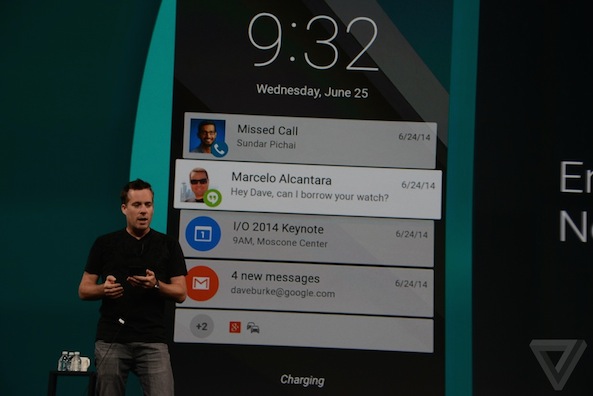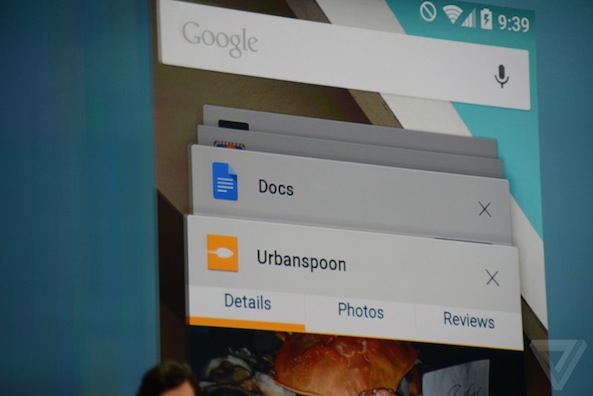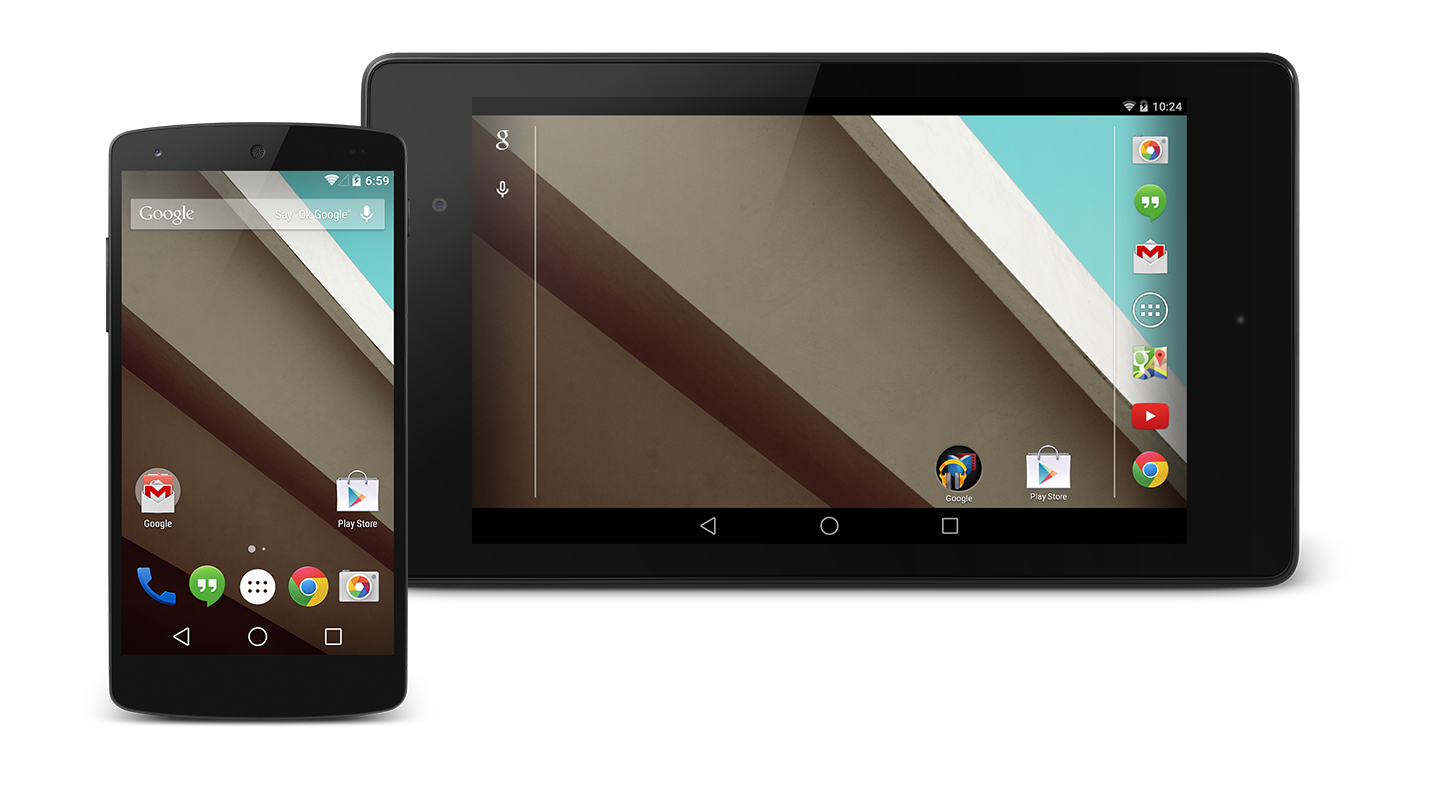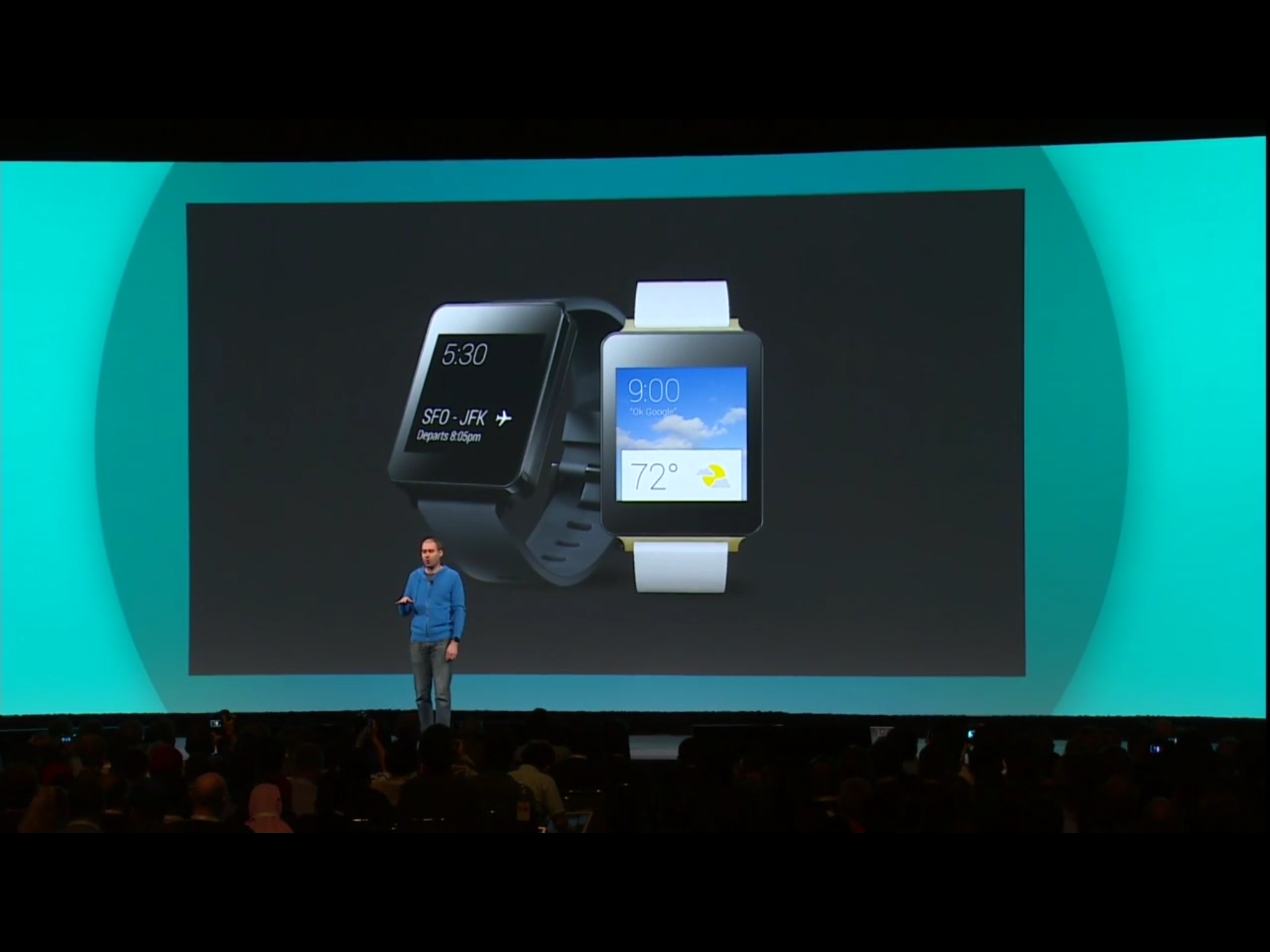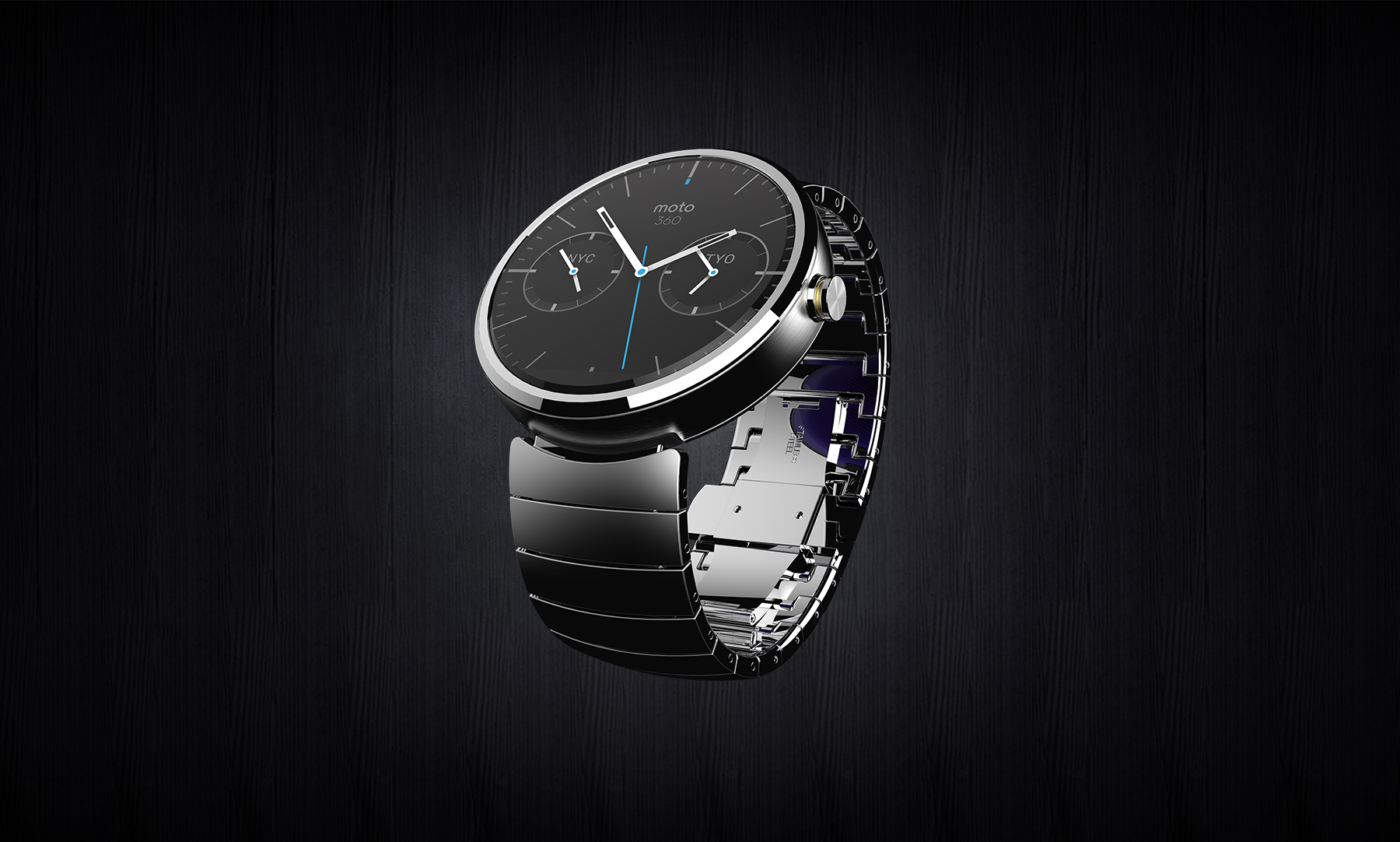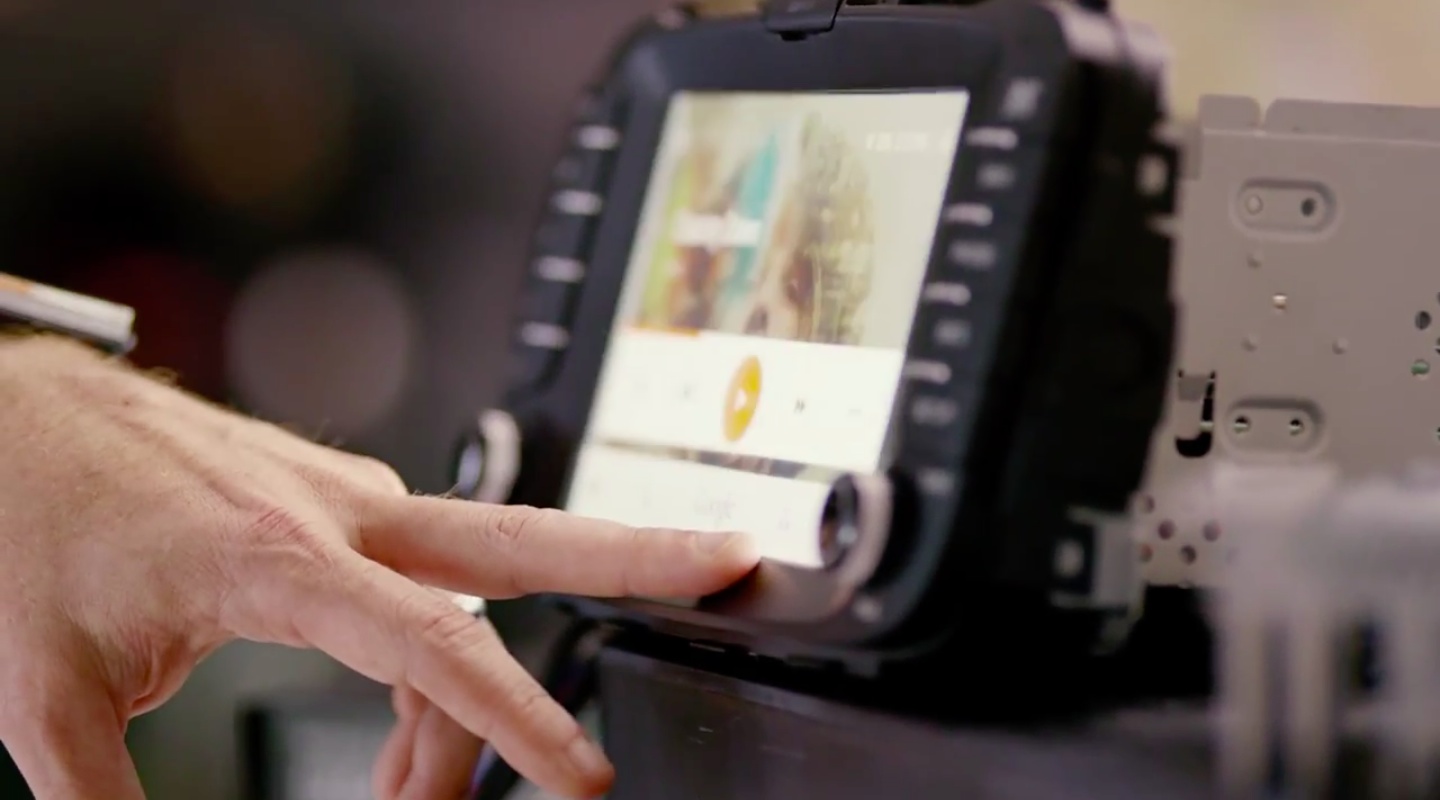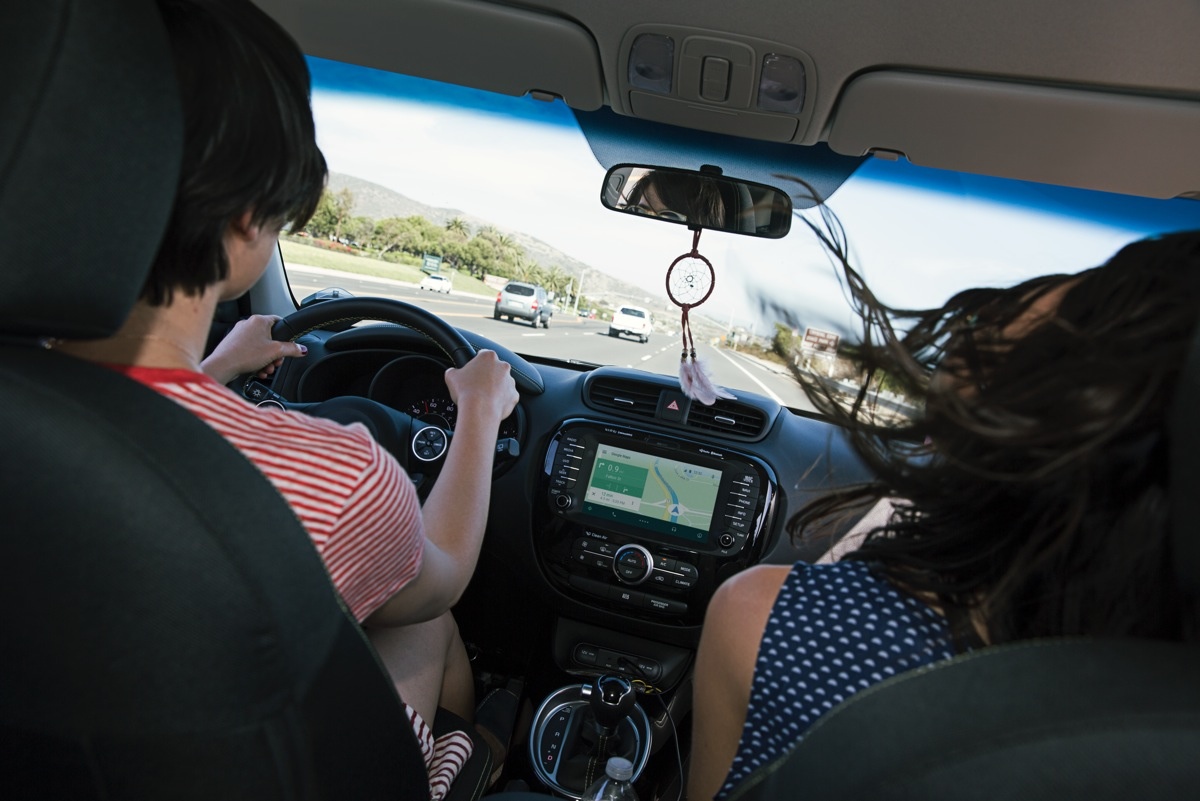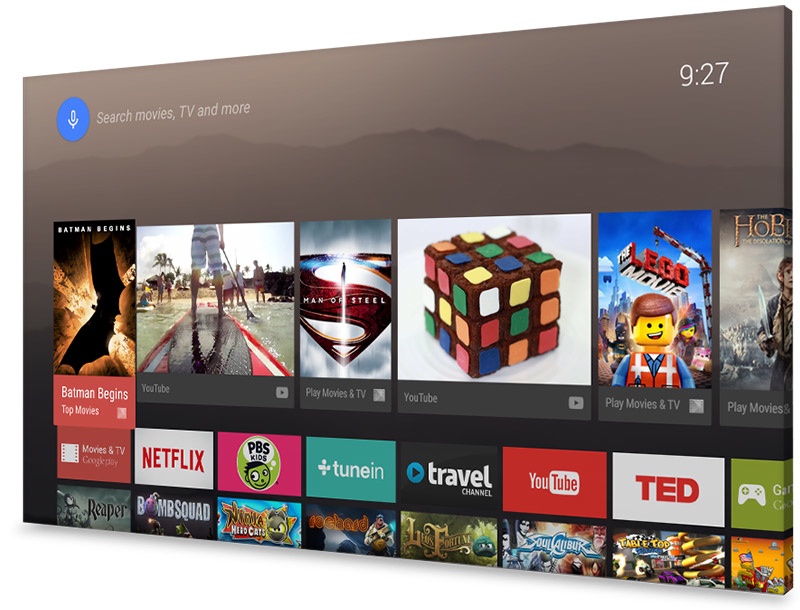Earlier today, Google kicked off its two-day summer conference for developers with a keynote talk. It always pays to keep tabs on competition, my colleague Joe Rosignoll and I have been covering key advancements concerning the Android platform in the form of Android L, Android Wear, Android Auto and Android TV announcements.
Making sense of it all, I’ve put together this recap of the most important developments from the Google I/O 2014 keynote. Give it a read and feel free to chime in with your thoughts and analysis in the comment section…
Android L: gamification of Android
The L is all about Material Design.
More than just a buzzword, Material Design outlines Google’s new design language for Android. Drawing inspiration from paper and ink, it gives various user interface elements such features as physical surfaces and edges, with an optimized system-wide Roboto font, color-matched themes, animated transitions and lighting and shadows gamifying the Android experience in a manner similar to iOS 7.
Android L’s Material Design capabilities are available in web apps as well, including smooth UI animations at sixty frames per second. All-new Enhanced Notifications in Android L allow you to read, open and dismiss alerts directly from the Lock screen, without needing to fully unlock your device – much like interactive notifications in iOS 8.
And with Project Volta, you’ll quickly identify battery hog apps running on your device while a Battery Saver will automatically kill apps, shut off Wi-Fi or dim the display to give you up to 90 minutes of additional battery life.
Android L apps can now store items like URLs, last accessed documents, images and more into a new system-wide Recents view. There is also an improved Google search with autocomplete suggestions within apps.
Google worked with some of the biggest GPU makers in mobile, including the iPhone graphics supplier Imagination Technologies, on Android Android Extension Pack, a set of hardware-accelerated APIs it hopes will power PC-level graphics on mobile.
With 5,000 APIs for devs, a brand new ART runtime exclusive to it, 64-bit support and more, Android L will improve your experience when it releases later this year.
Android Wear: for smarter wearables
Previewed back in March of this year, Android Wear is now available with the official SDK for developers to write apps that run natively on wearable devices. The goal is to replicate Android’s success in smartphones, this time on wearables.Google’s “Information That Moves With You” mantra for Wear entails such features as Google Now, OK Google, notifications, swippable card interface, fitness goals with daily summaries, music playback, custom watch faces, content sync between wearables and other Android devices and more.
Wear works with phones running Android 4.3 or higher. Conveniently, LG’s G watch and Samsung’s Gear Live today started selling through Google Play. Motorola’s Moto 360 smartwatch with Android Wear, pictured above, will arrive later this summer.
Android Auto: purpose-built for driving
Like Apple’s CarPlay, Android Auto extends Google’s platform into the car in a way that’s purpose-built for driving and focused on navigation, communication and music.
In addition to stock apps like Google Now and turn-by-turn navigation with live traffic from Google Maps, Android Auto supports both Google’s own Play Music service as well as third-party apps like Spotify and Songza.
Other features include support for physical car controls, voice dictation, reminders, events, incoming message/phone call alerts and more.
25 manufacturers have pledged to bring Android Auto compatible vehicles and aftermarket solutions later this year, including Acura, Alfa Romeo, Bentley, Chevy, Chrysler, Dodge, Honda, Hyundai, Alpine, Clarion and JVCKenwood.
Android TV: take four
Basically a rehashed Google TV which has failed spectacularly, Android TV’s biggest strength is the redesigned interface which promises less browsing and more watching, with features like voice searching (you could tell it to list “Oscar nominated movies from 2008”) and personalized recommendations right on your Home screen.
Oh, and it runs Android games compatible with gamepads, too.
Android TV also supports Google Cast technology so you can easily send movies and shows from your phone or tablet to a TV, similar to the Apple TV-AirPlay combo. In addition to Google Play movies and TV shows, Android TV supports web content from sources like YouTube, and premium entertainment like Netflix.
Interesting stats
Given the sheer size of the ecosystem and Google’s lead in activations, the Internet giant raved about the numbers which help describe Android’s reach and scale.
Here are a few head-turning highlights:
- 1 billion active Android users based on a 30-day usage period
- Android users collectively check their phone 100 billion times per day
- 20 billion text messages sent per day via Android devices
- Android users take 93 million selfies per day
- 1.5 trillion steps taken by Android users per day
- Android has 62 percent global market share for tablets based on shipped devices
- Android app installs on tablets is up 236 percent year-over-year
To dive deep into Google’s announcements, check out the official Android website, enjoy a replay of the keynote stream on YouTube or follow all Google I/O 2014 videos.
Summing up
Google has made some rather significant advancements today.
Android L is refining the experience with a sleeker user interface while providing the APIs and the plumbing work so developers could write more cohesive and engaging apps. It’s optimized for next-generation graphics and puts Google closer to its goal of providing a stutter-free app platform.
Android Wear will help maintain Google’s lead by giving wearable device vendors the tools to quickly build a compelling smartwatch or a fitness tracker that can tap into the Android ecosystem.
Android Auto is purpose-built for driving and focused on navigation, communication and music, with wide industry support and features like Google Now, voice-enabled music and Google Maps turn-by-turn directions with live traffic, to name a few.
And Android TV, Google’s latest attempt at the living room, should bring some excitement to the sector by revamping the interface and putting more Android apps on your big screen TV.
Frankly, I expected more from Google, something along the lines of Apple’s ‘one more thing’ surprises. With management changes at the top of Google and Apple’s renewed focus on clean design, it almost feels as if Google felt pressured to replicate iOS 7’s appearance on Android – which isn’t saying Android L doesn’t hold its own.
On the other hand, the search monster is adamant to make its platform available across as many devices as possible so Wear and Auto are first steps in the right direction.
I wish I could say the same thing about Android TV: Google has a history of failed living room attempts in the form of Google TV so it remains to be seen whether a name change, a fresh coat of paint and a few new features can make a dent.
Anyway, your guess is as good as mine so meet us in comments and tell us how you think Google did today.
